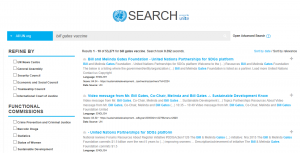

If you go onto the United Nations main page and type “BILL GATES VACCINE” into the search engine, you will reach an astonishing 53,271 results. Bill Gates and the UN have long collaborated (or is it colluded) in the vaccination business.
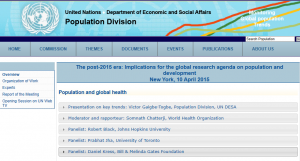

Daniel Kress, a representative for the Bill and Melinda Gates Foundation, was a panelist on an April 10, 2015 conference with the UN Population Division.
1. Other Articles On CV “Planned-emic”
(A) https://canucklaw.ca/cv-0-corona-plandemic-lobbying-deleted-resources-cl-listings-theresa-tam-canadas-hoaxer-zero
(B) https://canucklaw.ca/cv-1-coronavirus-patent-by-pirbright-institute-funded-by-gates-foundation-climate-change-scam-15/
(C) https://canucklaw.ca/cv-2-coronavirus-research-at-usask-gates-foundation-undp-funded-ivi-douglas-richardson/
2. Important Links
(1) https://news.un.org/en/story/2012/09/421482-leaders-un-event-unite-behind-final-push-eradicate-polio
(2) http://archive.is/sqIGu
(3) https://ebolaresponse.un.org/un-health-agency-announces-start-ebola-vaccine-testing-worst-affected-areas-guinea
(4) http://archive.is/sqIGu
(5) https://www.un.org/en/development/desa/population/events/expert-group/22/2_global_health.asp
(6) http://archive.is/K6YVP
(7) https://www.un.org/en/development/desa/population/events/expert-group/22/2_global_health.asp
(8) http://archive.is/MBxUd
(9) https://news.un.org/en/story/2016/11/545652-worlds-first-malaria-vaccine-set-2018-rollout-africa-after-un-health-agency
(10) http://archive.is/sTltI
(11) https://news.un.org/en/story/2018/01/1001681
(12) http://archive.is/11ljQ
(13) https://www.un.org/en/development/desa/population/events/expert-group/28/index.asp
(14) http://archive.is/rm02e
(15) https://www.gavi.org
(16) https://www.gavi.org/our-alliance/operating-model/gavis-partnership-model
(18) http://archive.is/JTnyH
(19) https://www.gavi.org/governance/gavi-board/composition
(20) http://archive.is/ZezEK
(21) https://www.gavi.org/investing-gavi/funding/donor-profiles/bill-melinda-gates-foundation
(22) https://www.gavi.org/investing-gavi/funding/donor-profiles/elma-vaccines-and-immunization-foundation
(24) http://archive.is/zYVbb
(25) https://www.gavi.org/news-resources/document-library/annual-contributions-and-proceeds
(26) http://archive.is/7q2oO
(27) https://www.who.int/immunization/immunization_agenda_2030/en/
(28) http://archive.is/Z6e7u
(29) https://id2020.org/
(30) http://archive.is/qTlBr
(31) https://www.who.int/workforcealliance/members_partners/member_list/gates/en/
(32) https://www.who.int/workforcealliance/members_partners/member_list/gates/en/
(33) http://archive.is/25Nxs
3. Context For This Piece
Bill Gates doesn’t believe his children should be vaccinated, yet pushes vaccines throughout the world. This should tell you what he really believes.
However, what is truly mind boggling is the scale which his organization — the Bill and Melinda Gates Foundation — has been active and financing vaccines elsewhere. The included sections are just a small sample of what he has been up to.
It’s also chilling that the UN Population Division (yes, that is a real thing), holds regular conferences on global population. So-called “experts” are invited to participate and take it in. Representatives from the Bill and Melinda Gates Foundation have attended such events.
Bill Gates has many startling connections. In fact, much of the current crisis all seems to tie back to him and his foundation. Those will be outlined in more detail.
4. April 2015 Population Control Meeting


The Report for this conference is right here. Pretty chilling to see the Gates Foundation on the panel, considering the push vaccines to “save lives”
During the next 15 years, the period covered by the post-2015 United Nations development agenda, demographic trends will have varied and profound implications on our ability to achieve sustainable development, suggesting the potential for large returns to investment in dedicated research on population and development aimed at informing innovative and evidence-based policies.
In order to review gaps and future priorities in demographic research to support the implementation of the post-2015 development agenda, the Population Division convened an expert group meeting on “The post-2015 era: Implications for the global research agenda on population and development” at the United Nations in New York on 10 April 2015. The purpose of the meeting was to discuss research priorities on population and development that merit global attention over the next 15 years. In identifying key knowledge gaps in future demographic trends and their implications for global sustainable development, the results of the meeting were intended to assist the international community in identifying a global, policy-relevant research agenda on population and development.
The meeting featured a keynote address on overarching population and development research priorities, six substantive sessions on changing age structures and their implications for development (one session each on youth and ageing), population and health (one session on global health and one on reproductive health), sustainable urbanization, and international migration and development; and a concluding session. Researchers and academics, experts from Governments and international organizations, and representatives from donors and civil society reflected on the following three discussion questions in each session:
Too long to detail here, but the Gates Foundation was a party to the meeting, and population development and demographic trends were discussed.
Among the contributors were:
Robert Black Professor and Director Institute for International Programs Johns Hopkins Bloomberg School of Public Health Baltimore, Maryland
Prabhat Jha Director Centre for Global Health Research University of Toronto, Toronto, Canada
Daniel Kress Deputy Director Integrated Delivery Bill & Melinda Gates Foundation Seattle, Washington
Lauren Sorkin Platform Director 100 Resilient Cities Rockefeller Foundation New York, New York
Amy Tsui Professor Bill & Melinda Gates Institute for Population and Reproductive Health Johns Hopkins Bloomberg School of Public Health Baltimore, Maryland.
John Wilmoth Director, Population Division United Nations Department of Economic and Social Affairs New York, New York
5. Nov 2018 Population Expert Meeting

For some context, the Report Of The Meeting was held on November 1/2, 2018. This was just a month before the UN Global Migration Compact was to be signed, helping to facilitate an estimated 258 million migrants to the West.
Important progress had been achieved in reducing mortality of specific age groups and certain population groups, including children and women. While much had been achieved in curtailing the HIV/AIDS epidemic during the last 25 years, there was a need to analyse inequality in accessing health services for different population groups in order to identify appropriate responses. Universal health coverage, one of the targets of the 2030 agenda, would be instrumental in this respect.
Participants identified the need for reducing inequalities in accessing health and allowing for different approaches within and between countries. “Standing still” was not an option: continuous efforts were required to address the challenges in health and other related fields. Participants called for greater attention to mental health and health impacts from environmental change, issues that would become important challenges in many countries. Participants raised the issue of non-communicable diseases (NCDs) as well as individual risk behaviour and health and discussed the challenges related to old-age labour force participation, such as health status and the competition between young and older workers.
Participants
Invited experts
Mr. David Baxter Baxter Consulting Group San Francisco, USA
Ms. Ann Biddlecom Guttmacher Institute New York, USA
Mr. John Bongaarts Population Council New York, USA
Mr. Win Brown Bill & Melinda Gates Foundation Seattle, USA
Ms. Suzana Cavenaghi Brazilian Institute of Geography and Statistics (IBGE) Rio de Janeiro, Brazil
Mr. Alex Ezeh Drexel University Philadelphia, USA
Mr. Baochang Gu Renmin University of China Beijing, China
Mr. Hongtao Hu Partners in Population and Development Beijing, China
Mr. Prabhat Jha University of Toronto Toronto, Canada
Mr. Benoit Kalasa United Nations Population Fund (UNFPA) New York, USA
Ms. Ellen Percy Kraly Colgate University Hamilton, New York, USA
Ms. Nyovani Madise African Institute for Development Policy Lilongwe, Malawi
Mr. Sikufele Mubita Central Statistical Office Lusaka, Zambia
Mr. Fabrizio Natale Joint Research Centre, European Commission Ispra, Italy
Ms. Holly Reed City University of New York (CUNY) New York, USA
Ms. Rachel Snow United Nations Population Fund (UNFPA) New York, USA
Ms. Barbara Sow United Nations Population Fund (UNFPA) New York, USA
Mr. Joseph Teye University of Ghana Accra, Ghana
Mr. Jorge Bravo United Nations New York, USA
Mr. Bela Hovy United Nations New York, USA
Ms. Vladimira Kantorova United Nations New York, USA
Mr. Victor Gaigbe-Togbe United Nations New York, USA
Mr. Patrick Gerland United Nations New York, USA
Ms. Karoline Schmid United Nations New York, USA
Mr. Frank Swiaczny United Nations New York, USA
Mr. John Wilmoth United Nations New York, USA
Mr. Guangyu Zhang United Nations New York, USA
Getting health care for everyone? Eliminating diseases for these millions of migrants on the move? If only there was someone willing to finance vaccines and vaccine research. Oh wait, there is.
6. Oral Polio Vaccines
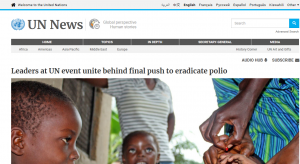
The World Health Organization (WHO) spearheads the GPEI, whose ultimate success would mark an early milestone in the Decade of Vaccines, which in turn represents a global vision to provide all children with the vaccines they need.
“No single one of us can bring this long, hard drive over the last hurdle,” WHO Director-General Margaret Chan said. “But together we can.”
A major GPEI donor is the Bill & Melinda Gates Foundation, whose co-chair, Bill Gates, also spoke of the significance eradicating polio would have for combating other diseases.
“When we defeat polio, it will motivate us to aim for other great health and development milestones,” he said.
It’s a bit disturbing that the photo for the article shows a child being force fed a pill. This is the 2012 push to get polio vaccines into Nigerian and Afghanistan.
7. Ebola Testing In Guinea
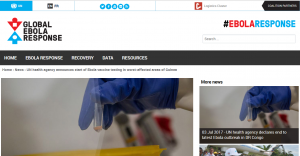
“The VSV-EBOV vaccine was selected for the planned trial based on a framework of parameters developed by the WHO Scientific and Technical Advisory Committee on Ebola Experimental interventions,” it said. “Criteria included acceptable safety profile, induction of appropriate immune responses, including neutralizing antibodies, and the timely availability of sufficient supplies of vaccine doses.
WHO, the UN Children’s Fund (UNICEF), the U.S. Centers for Disease Control (CDC), the Bill and Melinda Gates Foundation and vaccine alliance GAVI are collaborating with the affected countries to develop plans and strategies for large-scale introduction, should this be needed.
WHO said the vaccines’ manufacturers have assured that enough vaccine will be available in the coming months and that financial resources are in place to procure and make vaccines available in the affected countries.
In 2015, an ebola vaccine was pushed onto Guinea. Apparently, initial 2014 clinical testing went well, so they released it to the general public.
8. Pentavalent, 5-in-1 Vaccine
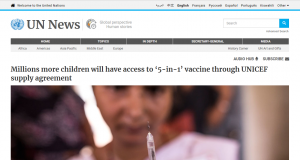
The vaccine, pentavalent, protects against diphtheria, tetanus, pertussis, hepatitis B, and Haemophilus influenzae type B, all of which are potentially deadly infections. The doses will be distributed to transitioning countries and those supported by Gavi, the international organization that works with public and private sectors to bring vaccinations to children living in the world’s poorest countries.
Since 2001, a strong collaboration between the Gavi Alliance Partners, which includes UNICEF, the Bill & Melinda Gates Foundation, and the World Health Organization (WHO), has generated great success.
Pentavalent will now be available for about $0.84 a dosage, a price that is also available to governments that self-finance the procurement. The new pricing is expected to generate more than $366 million in savings for donors and governments.
According to Shanelle Hall, Director of UNICEF’s supply and procurement headquarters, as many as 90 per cent of children under the age of five who die from vaccine-preventable diseases are currently living in countries where donors are no longer fully funding vaccination supplies. “For the most vulnerable children in the world, pricing can make a difference between life and death,” she stated in a news release.
In 2016, Pentavalent was released on the public, which was supposed to simultaneously vaccinate against diphtheria, tetanus, pertussis, hepatitis B, and Haemophilus influenzae type B.
9. Malaria Vaccine Announced
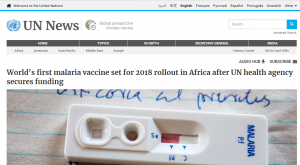
“The pilot deployment of this first-generation vaccine marks a milestone in the fight against malaria,” stated Dr. Pedro Alonso, Director of the WHO Global Malaria Programme, adding that these pilot projects will provide valuable evidence from real-life settings to make informed decisions on whether to deploy the vaccine on a wide scale.
The vaccine, known as RTS,S, acts globally against the most deadly malaria parasite P. falciparum, very common in Africa. Based on the results from clinical trials, the new vaccine will provide partial protection against malaria in young children.
The vaccine was developed through a partnership between GlaxoSmithKline and the PATH Malaria Vaccine Initiative (MVI), with support from the Bill & Melinda Gates Foundation and from a network of African research centres.
Full funding – $15 million for the malaria vaccine pilots – for the first phase of the programme, has already been received, and an additional commitment of about $37 million from partners is expected to cover the first four years.
“WHO recognizes and commends the leadership and support of all funding agencies and partners who have made this achievement possible,” said Dr Jean-Marie Okwo-Bele, Director of the WHO Department of Immunization, Vaccines and Biologicals.
In 2016 it was announced that a malaria vaccine would be released in 2018. Gates and his many partners are listed in the article. Malaria is said to be one of the biggest killers of children.
10. 500M To Be Vaxxed Against Measles

“Eliminating measles would avert half a million deaths, while controlling rubella and Congenital Rubella Syndrome (CRS) would promote health of pregnant woman and the infants they give life to,” said Dr. Poonam Khetrapal Singh, Regional Director for the World Health Organization (WHO) South-East Asia, referring to the ‘big six;’ Bangladesh, India, Indonesia, Myanmar, Nepal and Thailand.
Immunization programme managers of the ‘big six’ countries, along with WHO, UN Children’s Fund (UNICEF), Vaccine Alliance (GAVI), Bill and Melinda Gates Foundation and Centre for Disease control are deliberating challenges, experiences and lessons learned in immunization in the Region that can be harnessed to eliminate measles and control rubella / congenital rubella syndrome (CRS).
“This dynamism and positive exchange is at the very core of south-south and triangular cooperation,” said Dr. Khetrapal Singh, who announced measles elimination and rubella / CRS control as one of her flagship programme at the start of her tenure in 2014.
The World Health Organization announced in 2018 that vaccinating against measles would prevent at least 500,00 deaths. The research and development is funded by the usual players, including the Gates Foundation.
These 5 examples shown are just a sample of what the Bill & Melinda Gates Foundation is involved with. There are many more examples.
11. GAVI: Global Vaccine Alliance
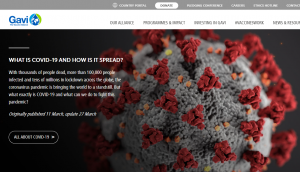
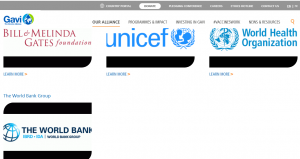
GAVI’s founding partners are:
- Bill & Melinda Gates Foundation
- UNICEF
- World Health Organization
- World Bank

12. Who’s Actually Funding GAVI?
Gates Foundation Contributions To GAVI
As a founding partner of Gavi, the Gates Foundation has brought international attention to the cause of immunisation and has made several commitments to Gavi, totalling USD 4.1 billion to-date. In 2000, the foundation made an initial USD 750 million commitment to the Vaccine Fund, which was catalytic in bringing other donors to support vaccine delivery and creating Gavi, the Vaccine Alliance.
In February 2007, the foundation committed USD 50 million to launch the first AMC to expedite the development and availability of pneumococcal vaccines. In June 2011, the Gates Foundation committed over USD 1 billion to Gavi over the period 2011–2015; of this commitment, USD 50 million was reserved for the Gavi Matching Fund. An additional, USD 250 million of challenge grant moneys were pledged to match additional funds raised earlier by other donors.
In June 2014 the Gates Foundation committed an additional USD 241 million to Gavi towards its complementary role on polio eradication including support for IPV over the period 2015–2018. This is complementing GPEI’s work on strengthening routine immunisation and introducing inactivated polio vaccine (IPV) in Gavi-supported countries.
At the Berlin Pledging Conference 2015, the Bill & Melinda Gates Foundation announced USD 1.55 billion for Gavi’s next 2016–2020 strategic period.
The Bill & Melinda Gates Foundation has to date poured over $4 billion into this group. But who else is involved?
Mastercard Contributions To GAVI
Mastercard is a technology company in the global payments industry committed to leading the way toward a World Beyond Cash™. Mastercard is also a business-to-business firm, providing franchise, technology, and advisory services to commercial, non-profit, and public sector customers that then go on to serve their clients. This approach to the last-mile experience allows for the creation of nuanced, localised solutions targeted at the end user. Mastercard has made a bold commitment to financial inclusion—to reach 500 million people previously excluded from financial services by 2020 including 40 million merchants. In making this promise, Mastercard highlighted the importance of public-private partnerships. While ambitious, this goal is not out of scope of the company’s activities. Mastercard has launched large-scale projects in more than 50 countries, bringing more than 300 million previously excluded consumers and merchants into the formal economy in just the last few years.
Mastercard has contributed $3.8 million thus far. The are huge advocates of a cashless society, and “financial inclusion”, which would get everyone into the banking system. Also, see a previous article done on Mastercard and financial inclusion.
ELMA Vaccines Contributions To GAVI

Beginning its grant-investing activities in 2012, the ELMA Vaccines and Immunization Foundation’s mission is to expand vaccine and immunization coverage for children globally.
In 2014, ELMA Vaccines and Immunization Foundation pledged USD 2 million to support urgent supply chain needs at country level to overcome barriers to delivering temperature-sensitive vaccines to remote areas. The pledge is matched by the UK Government through Gavi’s Matching Fund, bringing the total sum to USD 4 million.
In 2018, ELMA partnered with Gavi’s INFUSE Pacesetter, Nexleaf Analytics, to scale up its innovative temperature sensing technology to support the cold chain aiming to increase coverage and vaccine introductions in Tanzania. ELMA pledged USD 1.7 million, which was matched by the Bill and Melinda Gates Foundation through Gavi’s Matching Fund, bringing the total sum to USD 3.4 million.
Of course, there are other partners and donors, but that is just a few.
| Organization Or State | Amount Donated |
|---|---|
| Gates Foundation | $4.1B |
| Canada | $435M |
| European Commission | $241M |
| La Caixa | $15.7M |
| Audacious Alliance | $9M |
| Red Nose Da Fund | $6.1M |
| LDS Charities | $4.2M |
| Girl Effect | $4.0M |
| Mastercard | $3.8M |
| Orange Healthcare | $2.7M |
| Int’l Fed Pharm Wholesale | $1.9M |
| ELMA Vaccines | $1.7M |
| Al Ansari Exchange | $1.1M |
Contributions-and-Proceeds-to-Gavi-as-of-30-September-2019
This is by no means all of GAVI’s contributors. However, it is interesting to note that the Bill & Melinda Gates Foundation is by far the biggest contributor.
13. WHO And Immunization Agenda 2030
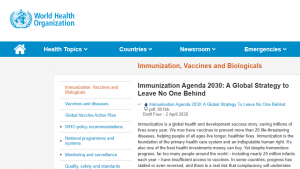
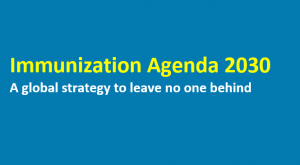
Immunization is a global health and development success story, saving millions of lives every year. We now have vaccines to prevent more than 20 life-threatening diseases, helping people of all ages live longer, healthier lives. Immunization is the foundation of the primary health care system and an indisputable human right. It’s also one of the best health investments money can buy. Yet despite tremendous progress, far too many people around the world – including nearly 20 million infants each year – have insufficient access to vaccines. In some countries, progress has stalled or even reversed, and there is a real risk that complacency will undermine past achievements.
With the support of countries and partners, WHO is leading the co-creation of a new global vision and strategy to address these challenges over the next decade, to be endorsed by the World Health Assembly. IA 2030 envisions a world where everyone, everywhere, at every age, fully benefits from vaccines to improve health and well-being.

IA2030 has been developed through a “bottom-up” co-creation process, with close engagement of countries to ensure that the vision, strategic priorities and goals are aligned with country needs. As an adaptive and flexible strategy, the IA2030 framework is designed to be tailored by countries to their local context, and to be revised throughout the decade as new needs and challenges emerge. IA2030 strategic priorities will be further refined in the monitoring and evaluation framework and will include indicators, targets and methods for tracking progress.
IA2030 goals are designed to inspire action for implementation. For countries, this could mean setting country-specific targets and milestones for the decade toward those goals. For regions, this could mean contextualising global goals and setting specific targets and milestones in Regional Vaccination Action Plans. For partner organisations, this could mean aligning organizational strategies and indicators to support the attainment of IA2030 goals.
Yes, immunizing everyone is part of the Agenda 2030. Good to know.
14. ID2020 And Vaccines
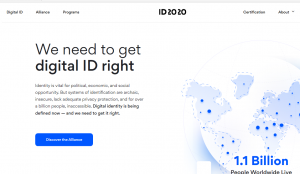

Hmmm…. looking at those names: who is (was) the head of Microsoft until very recently? Whose foundation is the largest donor to GAVI? The answer to both, of course, is Bill Gates.
Our Approach to Projects
The ID2020 Alliance provides funding and other forms of material support for high-impact and high-quality digital identity projects that are privacy-protecting, user-centric, and designed for scale, impact, and replicability. Proposals are accepted on a rolling basis at various stages of development. Any individual or organization meeting the required application and evaluation criteria is welcome to submit a proposal.
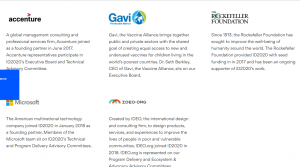
ID2020’s founding partners:
- Accenture
- GAVI
- IDEO
- Microsoft
- Rockefeller Foundation
This is most interesting: a group that wants to advance a digital ID for everyone is largely founded by a man who has an obsession with vaccinating the entire world. If only there was a mutual solution for both problems, such as microchipping everyone.
15. Gates Foundation Huge Donor For W.H.O.
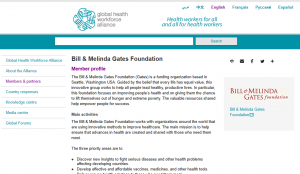
Bill & Melinda Gates Foundation
Member profile
The Bill & Melinda Gates Foundation (Gates) is a funding organization based in Seattle, Washington USA. Guided by the belief that every life has equal value, this innovative group works to help all people lead healthy, productive lives. In particular, this foundation focuses on improving people’s health and on giving them the chance to lift themselves out of hunger and extreme poverty. The valuable resources shared help empower people for success.
Main activitiesThe Bill & Melinda Gates Foundation works with organizations around the world that are using innovative methods to improve healthcare. The main mission is to help ensure that advances in health are created and shared with those who need them most.
The three priority areas are to:
- Discover new insights to fight serious diseases and other health problems affecting developing countries.
- Develop effective and affordable vaccines, medicines, and other health tools.
- Deliver proven health solutions to those who need them most.
The foundation’s Global Health Program that accounts for about 50 percent of total spending focuses on 20 diseases. The top five are: diarrheal diseases (including rotavirus), pneumonia, malaria—most deadly to kids—and AIDS and TB, which mostly affect adults.
Links to the health workforce crisis
The Bill & Melinda Gates Foundation supports advocacy efforts to build awareness of global health challenges, develop new ways to finance health programs, and improve health data. Studies have shown that improved health is critical to getting a country into the positive cycle of increasing education, stability, and wealth. This is accomplished through the right investments in healthcare, training of qualified medical workers and research for science.The Bill & Melinda Gates Foundation joined the Alliance in 2007 as a development Partner.
The Gates Foundation has been contributing 50% of the money for 20 diseases. Must given them tremendous influence over how exactly that money is spent.
16. Gates Is Connected To Everything
Bill Gates is like the Kevin Bacon of the eugenics movement: he is connected to everything and everyone. Here are some of the relevant links.
- Bill Gates openly supports reducing the population
- Bill Gates openly supports vaccines for everyone (except his family)
- The Bill & Melinda Gates Foundation attends UN population conferences
- The Bill & Melinda Gates Foundation finances vaccine research
- The Bill & Melinda Gates Foundation is one of the founders of GAVI, the global vaccine alliance
- World Health Org largely funded by Gates Foundation
- GAVI is a founding partner of ID2020
- Microsoft is founding partner of ID2020
Serious question: did Bill Gates cause this coronavirus “pandemic”? Or is he simply a shameless opportunist looking to cash in on the situation?
